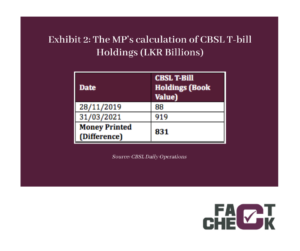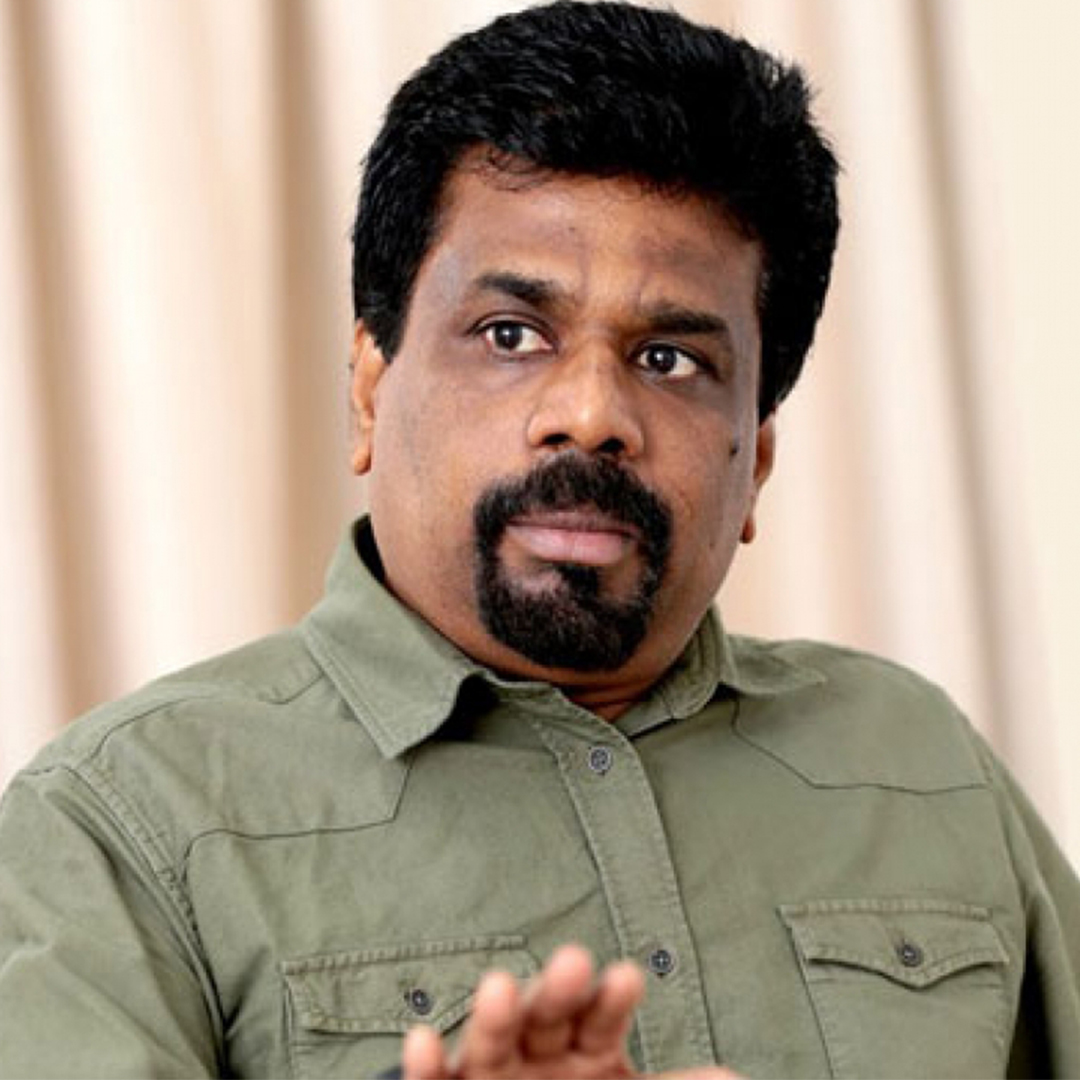Fact Check
To check this claim, FactCheck.lk consulted data from the Central Bank of Sri Lanka (CBSL) Daily Operations.
As noted by FactCheck.lk previously, money printing is more formally known as deficit financing. This refers to when the Central Bank finances the government’s budget deficit by creating new money to directly purchase government securities issued by the Treasury. The value of the Central Bank’s purchases of treasury securities can be reported in terms of their face value or book value (marked to market) (See Exhibit 1).
CBSL data shows that the LKR 831 billion figure cited by the MP may be attributed to the increase in outstanding book value from LKR 88 billion on 28 November 2019 to LKR 919 billion on 31 March 2020.
The MP has two mistakes in his calculation of the amount of money printed (see Exhibit 2). First, the period which he cites as the day this government came into power should start from 21 November 2019 (the day the new prime minister took office) instead of 28 November 2019. Second, it is the face value of the Treasury bill holdings that more proximately measures the amount of money printed, rather than the book value. From 21 November 2019 to 31 March 2021, the face value increased from LKR 80 billion to LKR 842 billion. Therefore, LKR 762 billion was printed during this period, which is 9% less than the MPs claim (see Exhibit 1).
Therefore, we classify the MP’s statement as PARTLY TRUE.


Sources
Central Bank of Sri Lanka, Data Library, Daily Operations, available at: https://www.cbsl.lk/eResearch/Modules/RD/SearchPages/Indicators_DailyOperationsNew.aspx
Central Bank of Sri Lanka, Annual Report, 2020, Special Statistical Appendix, available at: https://www.cbsl.gov.lk/sites/default/files/cbslweb_documents/publications/annual_report/2020/en/16_S_Appendix.pdf


